Essential Strategies for Balancing Work and Life in Construction
Editorial Note: This article was brought to you courtesy of Rose Morrison, managing editor of ...
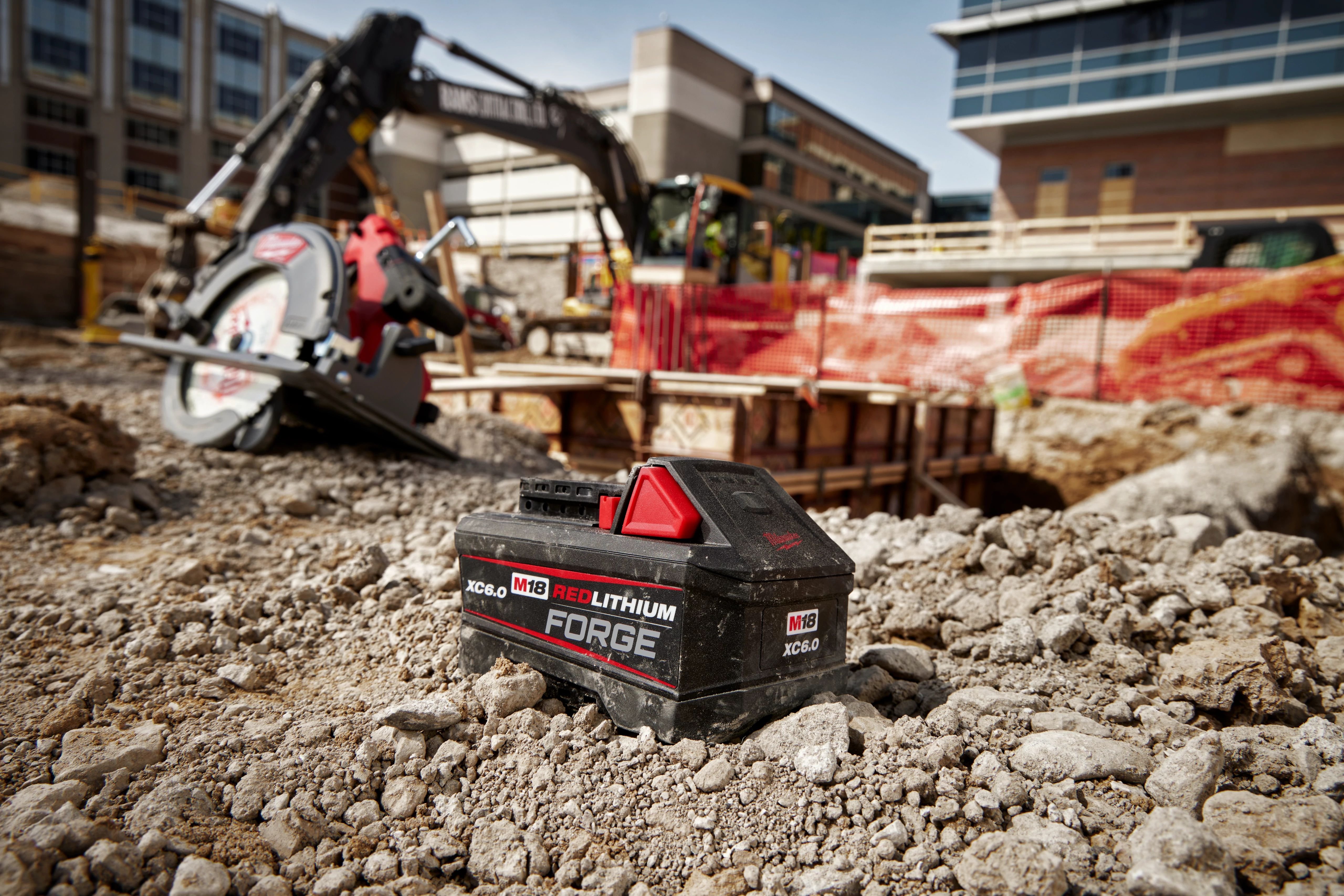
Which battery should I choose?
It’s a question that comes up a lot here at Milwaukee®.
Whether you’re looking for a replacement, an upgrade, or are new to Milwaukee, you’ve probably noticed we have a wide selection of batteries to choose from.
So where do you start? How can you tell which Milwaukee battery is best for you?
The answer depends on how deep you want to go.
Maybe you’re not interested in the distinctions between one battery and another. Maybe you're just looking for a standard REDLITHIUM™ ion-battery that gets the job done and works with your particular tool, or set of tools. Nothing wrong with that.
Then again, maybe you’re a stickler for the details who wants to ensure you’re always getting the absolute peak performance out of your batteries and tools from one job to the next.
If that last part sounds like you, then the first thing you need to know is that half of the battle over power tool optimization comes down to which battery you’re using.
But don't worry–we've got you covered! Follow along with this simple guide to learn more about Milwaukee’s unique approach to lithium-ion battery technology and how to choose a battery pack that perfectly fits the job in front of you.
Only have time for a quick primer? Skip ahead to "How to Read a REDLITHIUM Battery."
Milwaukee offers more than 70 lithium-ion batteries and chargers for more than 500 cordless power tools and pieces of equipment.
It’s true: We have a lot of batteries. And knowing which one to choose can be a bit overwhelming.
That said, there are a few simple tips that can help you immediately narrow down your search:
Let's say you just upgraded to a brand new M18 FUEL™ SAWZALL® with ONE-KEY™ and are wondering if the five-year-old battery from your previous tool is still compatible with the new model.
As long as your older battery is still in good shape, the answer is a resounding yes.
All Milwaukee batteries are designed to be backward and forward compatible.
In other words, whether you bought a battery today, five years ago, or five years into the future, that battery will work with any Milwaukee cordless power tool within its dedicated power tool system.
But wait a minute, what exactly do we mean by “dedicated cordless power tool system?”
That brings us to our next tip.
Are all Milwaukee batteries interchangeable? This is another question we get a lot.
The answer is both yes...and no.
The easiest way to know which batteries work with your tool(s) is to make sure their labels match.
Here’s what we mean:
All of Milwaukee’s cordless electric power tools and equipment fall into one of three power tool systems: M12™, M18™, and MX FUEL™ (M4™ and M28™ are the outliers).
Each power tool system has its own dedicated line of batteries:
So to recap, while our batteries are not interchangeable across power tool systems, they are, however, interchangeable within them.
That’s why the simplest way to choose a correct battery is to make sure the label on the battery matches the label on your tool.
For example, if you’re looking for a battery for your M12 FUEL™ 1/4" Hex Impact Driver, then any battery (or charger) that bears the “M12” label will work with that tool.
Furthermore, any M12 battery will also work with any other tool from the M12 power tool system.
But hang on, what do we mean “any M12 battery”?
Is there more than one type of M12 battery that’s compatible with the M12 power tool system?
We have such sights to show you.
For now though, let’s keep keeping it simple and move on to the next tip.
Perhaps the easiest shortcut for deciding which battery will get the best performance out of your tool is to simply stick with the battery that came with the tool when you purchased it.
For example, our M18 Brushless 1/2" High Torque Impact Wrench w/ Friction Ring Kit comes pre-packaged with an M18 REDLITHIUM XC 4.0 Extended Capacity Battery Pack, which delivers twice the runtime and 20% more power.
This is the battery that our engineers have determined to be the most optimal for this particular tool and the applications it is typically used for.
Simple, right?
Of course, this tip is only helpful if a battery indeed came with your tool when you purchased it.
Furthermore, maybe the specific application you have in mind is a little different from the general use case. Not to mention, maybe by now you’re wondering: What is REDLITHIUM? And how do you read these battery labels, anyway? For instance, what’s up with that “XC 4.0” string of letters and numbers in that example we just cited?
All excellent questions. To answer them, we’re going to need to dive a bit deeper...
As with anything in life, choosing a Milwaukee battery that perfectly matches your specific needs comes down to the nitty gritty details.
If you've made it this far and are still hungry to learn more about Milwaukee's various battery options, the next step is to begin exploring the different tiers and types of batteries within the REDLITHIUM ion-battery family.
Milwaukee has led the cordless revolution since we invented the first lithium-ion battery for power tools nearly two decades ago.
Our unrivaled approach to cordless power is one of perpetual evolution, aiming to constantly improve upon the latest and greatest technologies in lithium-ion battery cell selection, pack construction, and electronics.
The culmination of this evolutionary approach is the REDLITHIUM family of lithium-ion batteries.
All of Milwaukee's lithium-ion batteries are part of the REDLITHIUM family, which is divided into several distinct tiers and types.
Let’s begin with the tiers.
The REDLITHIUM name represents a cutting-edge blend of electronics, chemistry, and thermal protection that delivers dramatically enhanced performance compared to the competition.
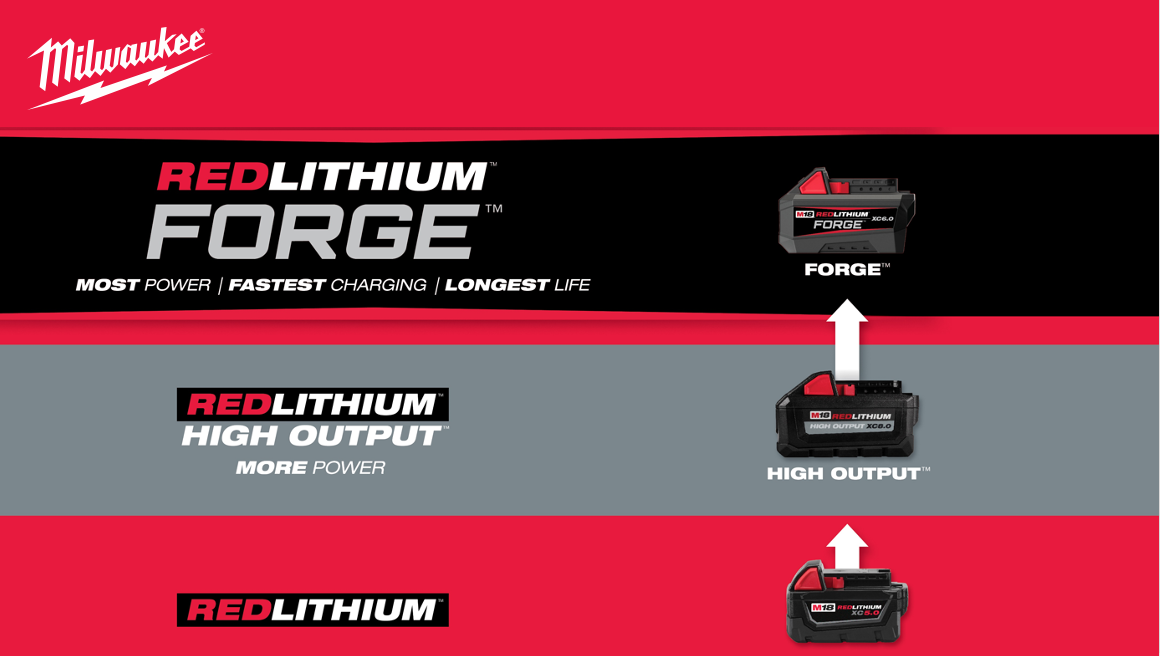
Batteries within the REDLITHIUM family exist on a technological spectrum that’s divided into three tiers:
Each tier signals a step up in lithium-ion technology, with REDLITHIUM FORGE at the highest, most advanced end.
Tip: To figure out your battery's tier, check the label to see if it reads REDLITHIUM, REDLITHIUM HIGH OUTPUT, or REDLITHIUM FORGE.
Understanding the three REDLITHIIUM battery tiers can help you optimize the overall performance of your batteries and tools.
If your primary concern is always having the latest and greatest in lithium-ion battery technology at your fingertips, then the battery's tier is what you’ll want to focus on most in your search for the perfect battery.
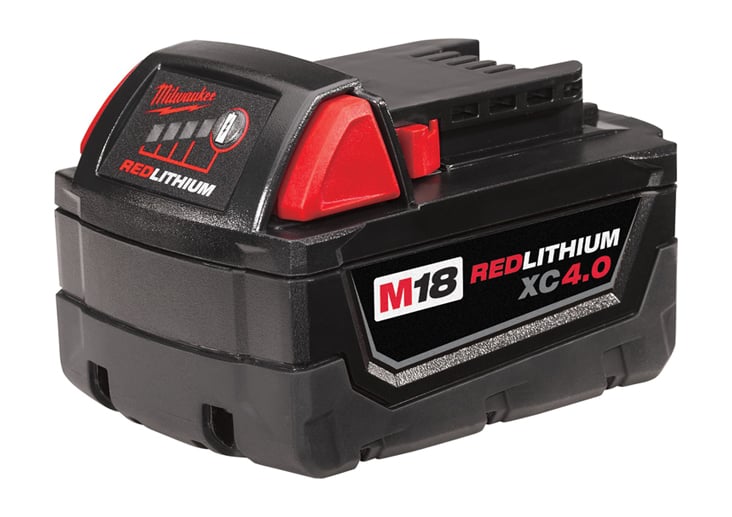
REDLITHIUM batteries represent the core of Milwaukee’s lithium-ion technology, the baseline of excellency for every battery we offer.
First introduced in 2010, we’ve continued to evolve the REDLITHIUM line to deliver a slate of batteries that think faster and work harder than any other lithium-ion battery on the market.
REDLITHIUM batteries are available across all three of Milwaukee’s primary power tool systems.
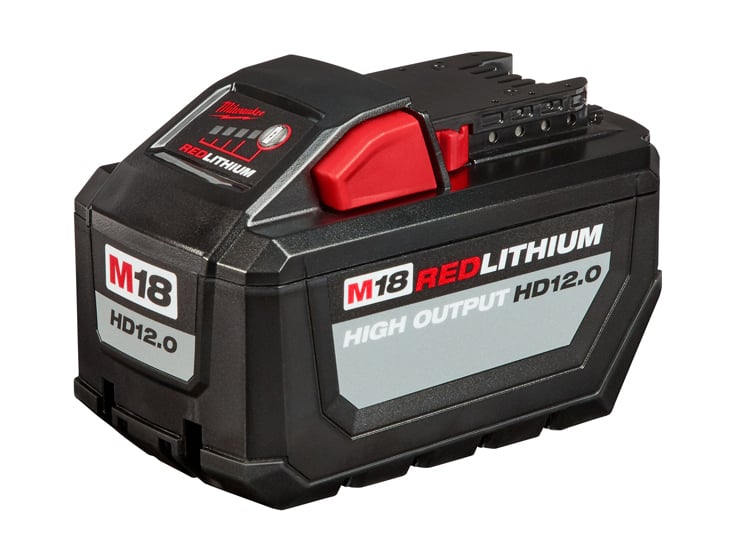
Released in 2018, the High Output tier of REDLITHIUM batteries harnesses more advanced electronics and lithium-ion cell technology to boost the power and performance of Milwaukee’s core battery to even greater heights.
For example, M12 REDLITHIUM High Output batteries are 25% more powerful and run 25% cooler than standard REDLITHIUM batteries. Likewise, M18 REDLITHIUM High Output batteries deliver 50% more power and run 50% cooler than their forebearers.
REDLITHIUM High Output batteries are available across all three of Milwaukee’s primary power tool systems.
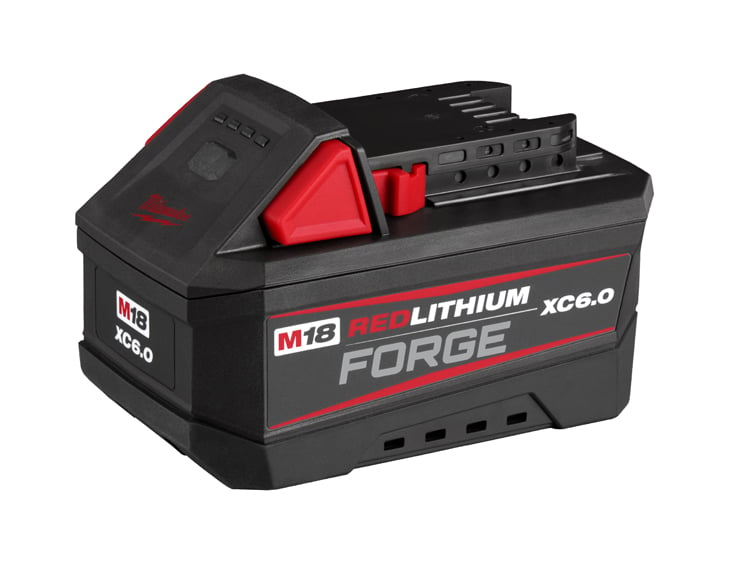
The most recent and most advanced addition to Milwaukee's REDLITHIUM battery family is the REDLITHIUM FORGE tier of batteries.
REDLITHIUM FORGE promises the most power, fastest charging, longest life, and most advanced level of lithium-ion technology.
Unveiled in 2023, FORGE represents nothing short of the next leap in the cordless revolution.
Previous generations of lithium-ion batteries across the power tool industry have been built exclusively around cylindrical cell technology. FORGE, on the other hand, promises to utilize next generation electronics and the most powerful lithium-ion technologies to date, including pouch cell and tabless cylindrical cell technology.
The combination of these elements allows REDLITHIUM FORGE to deliver greater power and cooler running in a significantly lighter and more compact battery pack.
For example, the M18 REDLITHIUM FORGE XC6.0 delivers the same amount of power in about half the size and weight as one of the biggest and most powerful batteries of the previous generation, the M18 REDLITHIUM HIGH OUTPUT HD12.0 (while equal in power, it's important to note that these two batteries do not have the same run-time, which we’ll explain more in a moment.
REDLITHIUM FORGE is currently only available in the M18 and MX FUEL power tool systems.
You can narrow your search for the perfect REDLITHIUM battery further by looking at a battery's type, or rather, its specific set of capabilities.
There are three REDLITHIUM types:
Tip: To figure out your battery's type, check for the letters CP, XC, or HD, which typically appear near the end of your battery's label.
Understanding the three REDLITHIUM battery types can help you more closely tailor the performance of your batteries and tools to your specific needs.
Generally, a battery’s type identifies where it falls on a scale of power level, size, and run-time—with Compact on the low end and High Demand on the high end.
Each of the three battery types can be found within each tier of the REDLITHIUM family.
That is, REDLITHIUM, REDLITHIUM Hight Output, and REDLITHIUM FORGE all have their own versions of CP, XC, and HD batteries.
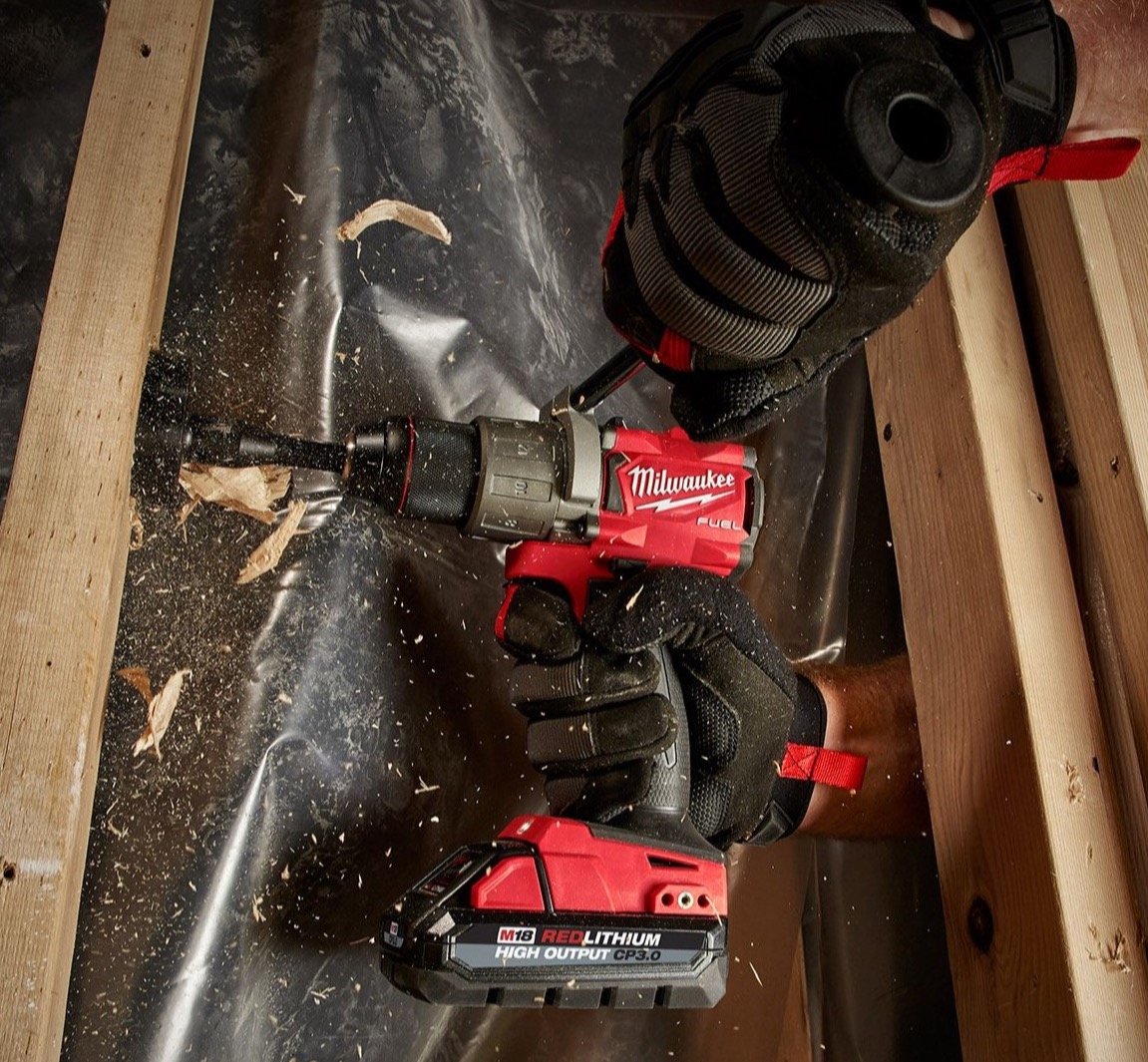
Compact batteries are less power-intensive, have shorter run-times, and are more geared towards ergonomics, portability, and ease-of-use.
Best Use: Compact (CP) batteries are ideal for smaller tools used in lighter jobs, overhead work, and tight spaces.
Example: The M12 REDLITHIUM CP2.0
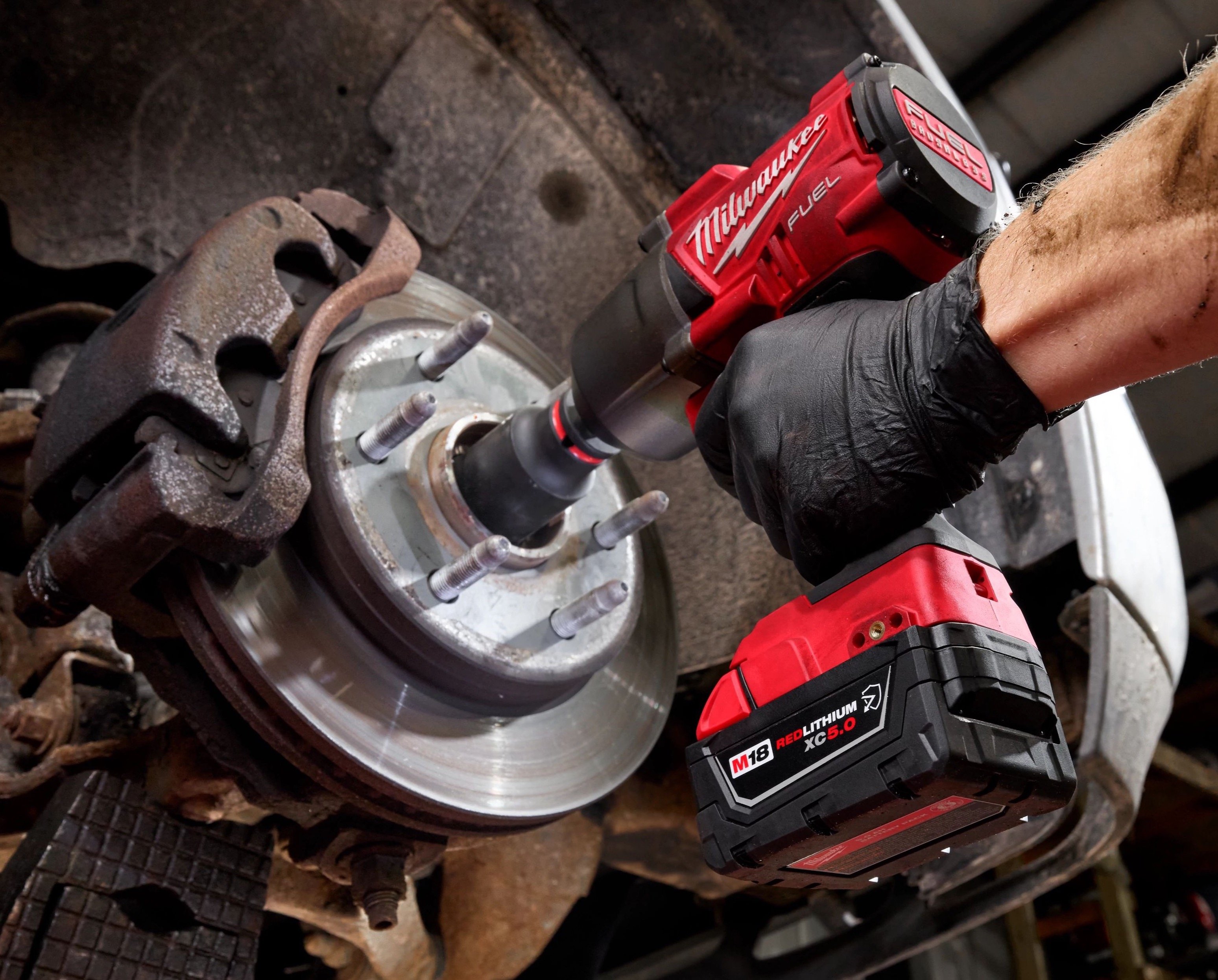
Extended Capacity batteries are excellent all-around work-horses that provide a balance of power, speed, and run-time for a wide variety of job applications.
Best Use: Extended Capacity (XC) batteries are ideal for jobs that call for more power and run-time but still benefit from a relatively lighter pack.
Example: The M18 REDLITHIUM FORGE XC6.0
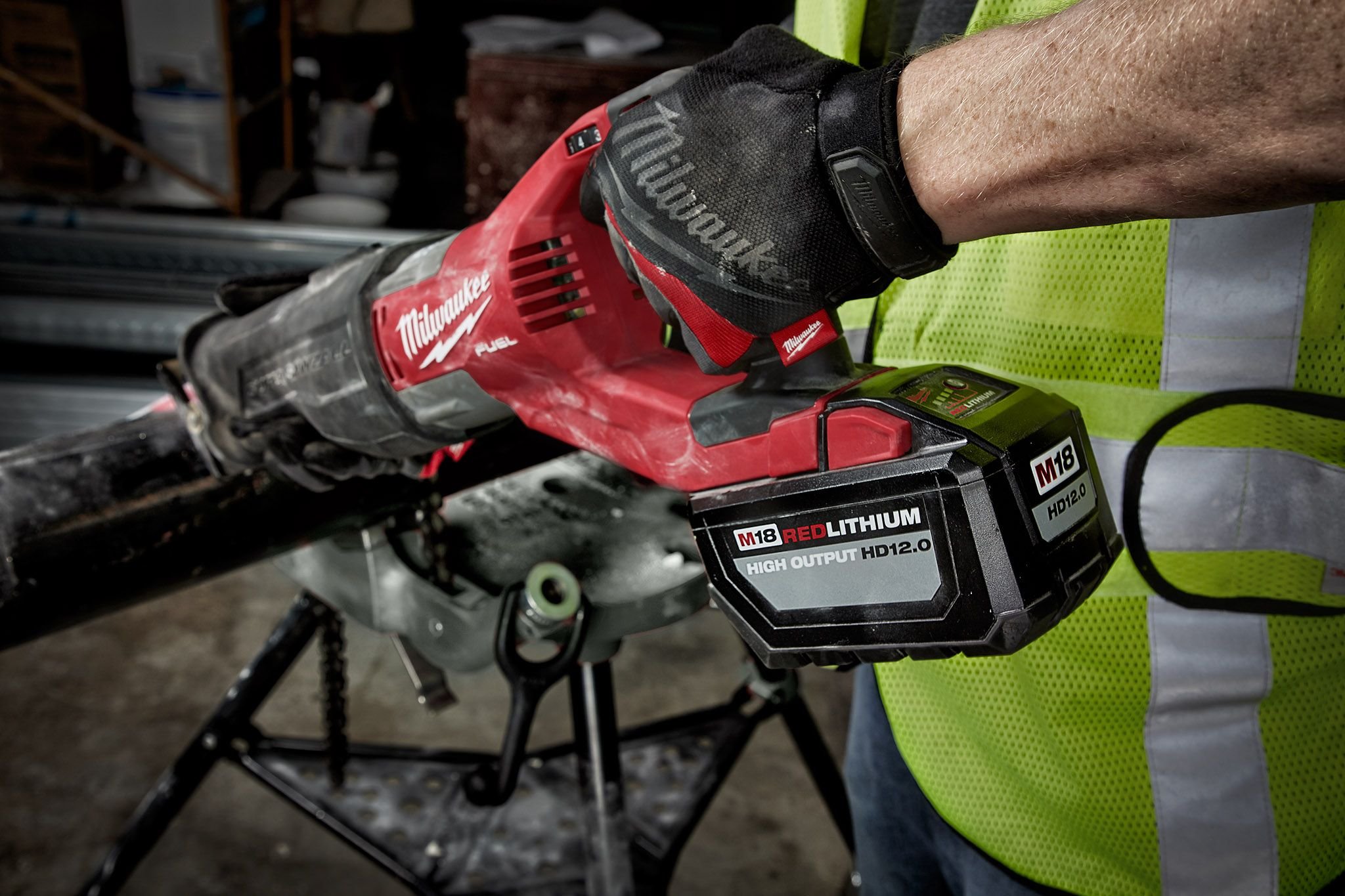
High Demand batteries deliver the most power, longest run-times, highest speeds, and fewer trips back and forth to the charger.
Best Use: High Demand (HD) batteries are ideal for power-hungry jobs that require uninterrupted workflows.
Example: The M18 REDLITHIUM HIGH OUTPUT HD12.0
Tip: It's easy to get "High Output" and "High Demand" mixed up. Remember, High Output refers to the tier of the battery, or its overall lithium-ion technology level, while High Demand--indicated on the battery's label by the letters "HD"--refers to its type, or overall capabilities.
Your battery optimization journey isn’t over if you don’t want it to be.
Once you’re able to navigate the tiers and types within the REDLITHIUM family of batteries, you're ready to dive into the deep end and explore the other unique features and battery variants Milwaukee has to offer.
There’s a wealth of information you can learn about every battery within the REDLITHIUM family, even beyond its type, tier, and power tool system.
To take full advantage of that information, you’ll need to go a layer deeper and learn more about how to read a REDLITHIUM battery and the packaging it comes in.
Run-time refers to how long a battery can run before it needs to be recharged.
The more run-time a battery has, the more work you can get done with your tool in a single session.
REDLITHIUM battery run-times are expressed in Amp hours (Ah).
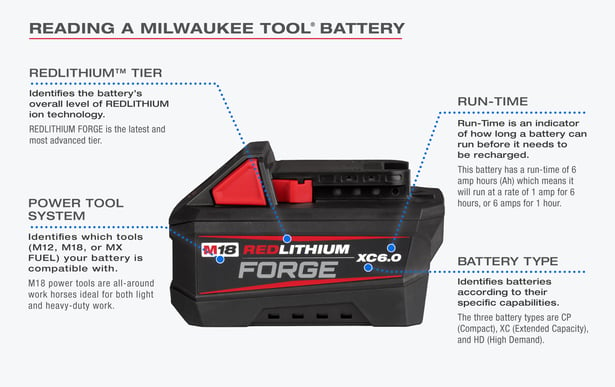
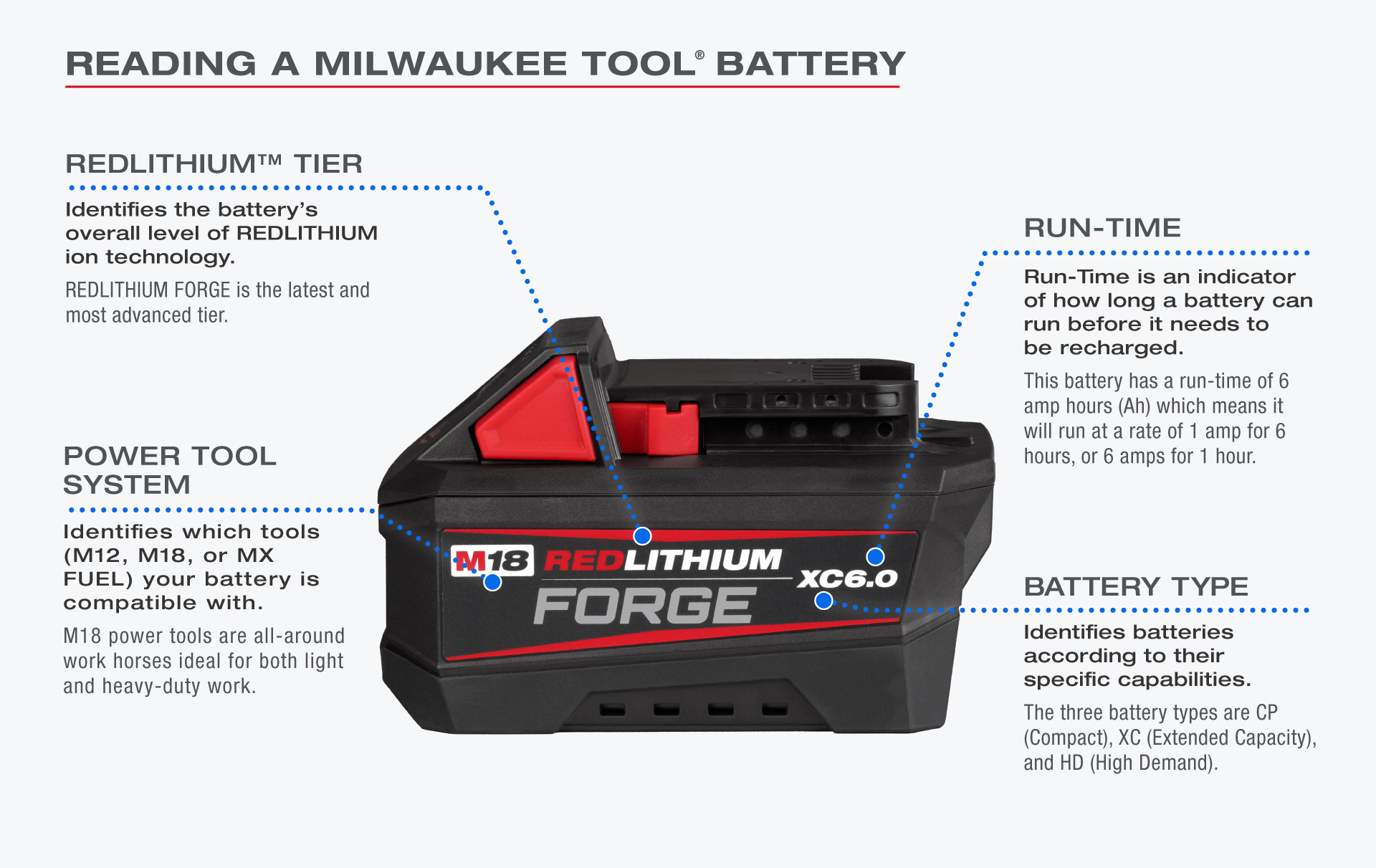
To figure out your battery’s run-time, check the number that appears at the end of the battery’s label.
Let’s use the M18 REDLITHIUM FORGE XC6.0 as an example.
The first part of the label is “M18”. As you’ll recall, this identifies the power tool system the battery is associated with, as well as its voltage.
Second is the “REDLITHIUM FORGE” part of the label, which identifies the battery’s REDLITHIUM tier.
Next is the “XC” , which identifies the battery type.
Finally, the “6.0” at the end of the label indicates the battery’s run-time.
So just from reading the label, we can tell that the battery:
We’ll save a more detailed breakdown of amp hours for another time. For now, all you need to know is that the bigger the number at the end of your battery’s label, the longer it can run.
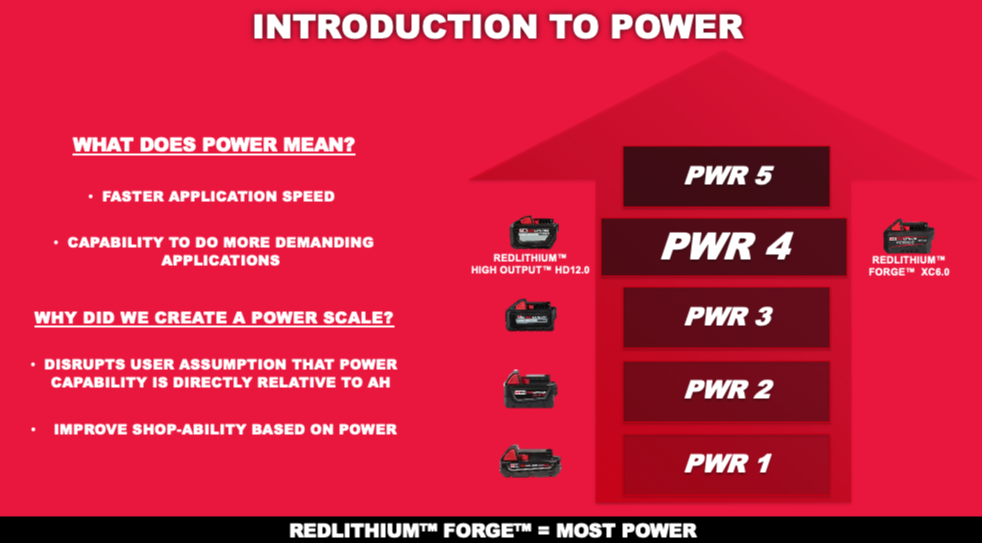
Power level refers to how much power a battery delivers.
More power equates to faster tool speeds and the ability to complete heavier duty applications.
To learn your battery’s specific power level, check the upper right corner of the packaging it comes in.
There, you’ll find the letters “PWR” and a number with lower numbers indicating the lowest power level and higher numbers indicating the highest power level.
Power level is impacted by a variety of factors, and while you can get a general idea by checking a battery’s tier and type, this isn’t always a perfect indicator of how much power it can deliver.
For instance, batteries in the REDLITHIUM High Output tier are generally more powerful than the standard REDLITHIUM batteries in the tier below. However, it’s also true that there are examples of standard REDLITHIUM batteries that have more power than High Output.
That’s why we developed the power level scale: to remove the guesswork and clearly communicate how your specific battery stacks up in terms of power.
We’ve only just begun the process of categorizing our batteries by power level, so stay tuned for more information.
Does a high power level equate to longer run-times, and vice versa?
This is a point of confusion we often run into and it’s worth a brief diversion into the weeds to explain.
In short, no: Power level and run-time are not directly related.
...not always, anyway.
To be clear, there are indeed examples of batteries that have both a high run-time and a high power level. However, this is not a rule that applies across the board.
Let’s compare three batteries to get a clearer idea of what we mean.
| Label | Power Level | Run-Time | |
|
|
3 |
6 Ah |
|
Battery B |
4 |
12 Ah |
|
Battery C |
4 |
6 Ah |
Look at Battery A and Battery C.
Both have the same run-time of 6 Ah.
However, Battery A is at power level 3 and Battery C is at power level 4.
So even though their run-times are the same, Battery C has a higher power level than Battery A.
Now look at Battery B.
Of the three batteries, Battery B has the highest run-time of 12 Ah.
However, Battery B and Battery C are both at power level 4.
So even though their power levels are the same, Battery B has a higher run-time than Battery C.
In this example, Battery B (the M18 REDLITHIUM HIGH OUTPUT HD12.0) was our single most powerful M18 battery until the recent introduction of Battery C (the M18 REDLITHIUM FORGE XC6.0).
With the advances in electronics and lithium-ion cell technology associated with REDLITHIUM FORGE, we can now match the power level of the REDLITHIUM High Output tier in a much lighter and more compact battery pack.
As you can see from this example, however, this boost in power level does not equate to a longer run-time.
Finally, it’s time to explore some of the battery variants in the REDLITHIUM family.
Knowing your battery’s power level and run-time are an excellent start, but we recognize that there may be other factors that are also important for you to consider.
Maybe you’re looking for a battery that’s able to withstand prolonged exposure to the elements.
Or perhaps your priority is a battery that runs cooler and charges faster.
If so, we’ve got you covered.

Resistant batteries have an upgraded housing that provides increased protection against common oils, greases, and solvents.
To figure out if your battery is Resistant, check the packaging and label for the word "Resistant".
Best Use: Resistant batteries are ideal for transportation maintenance, concrete, and industrial workers who regularly expose their tools to liquids and other harsh environmental elements that can degrade performance or cause a battery to break over time.
Examples: All REDLITHIUM MX FUEL batteries are resistant, and all REDLITHIUM FORGE batteries are planned to be resistant as well, including our much touted M18 REDLITHIUM FORGE XC6.0.
Other examples of resistant batteries include the M12 REDLITHIUM HIGH OUTPUT XC5.0 Battery and the M18 REDLITHIUM XC5.0 Resistant Battery.
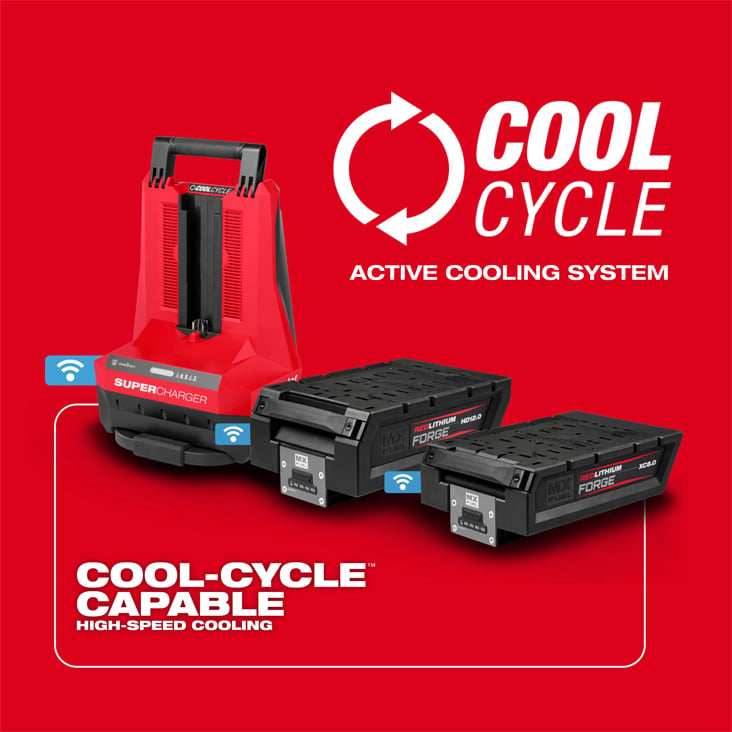
Cool-Cycle batteries have vents built into their housings that provide high-speed air-cooling, allowing them to charge much faster than other REDLITHIUM batteries for less downtime.
This effect is achieved with chargers that have Cool-Cycle capability that blow air through the Cool-Cycle batteries’ built-in vents, enabling some models like the MX FUEL REDLITHIUM FORGE HD12.0 to charge to 100% in as little as 45 to 65 minutes.
Best Use: Heat can cause a battery’s performance to dip or shutdown entirely. That’s why Cool-Cycle batteries are ideal for construction workers whose batteries are prone to heating up, whether due to strenuous use or exposure to extreme heat on the job-site.
Packs that come off the charger will now go back on the tool at a cooler temperature, which means extended runtime for the next application
Finally, keeping the cell and electronics cool while charging will extend the overall life of the battery, delivering on the longest life promise of FORGE.
Examples: Cool-Cycle is currently available in MX FUEL REDLITHIUM FORGE 8.0 and MX FUEL REDLITHIUM FORGE HD12.0 battery packs.
Pair these batteries with the Cool-Cycle capable MX FUEL™ Super Charger.
However simple or complex your specific needs might be, we hope this guide can help you choose a REDLITHIUM battery that is just right for you, wherever you are in your Milwaukee journey.

Sign up to receive ONE-KEY™ news and updates.
Editorial Note: This article was brought to you courtesy of Rose Morrison, managing editor of ...
Editorial Note: This article was brought to you courtesy of Rose Morrison, managing editor of ...
Editorial Note: This article was brought to you courtesy of Rose Morrison, managing editor of ...


